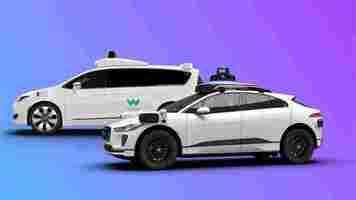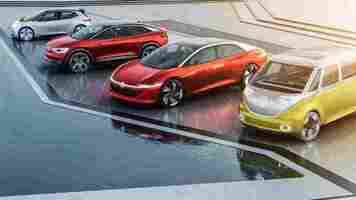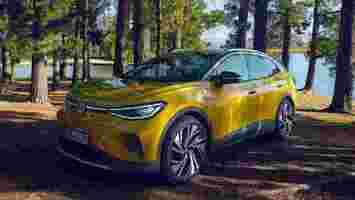Want to ride a robotaxi? Here’s where that’s actually possible
Among the things my generation has been promised, I’m especially excited about the rise of robotaxis.

Sadly, they aren’t yet flooding the streets, as we expected or wished for. Regulatory approvals aren’t that easy to get, and the tech is still facing some hurdles.
But don’t despair just yet — there are indeed some places around the world where you can actually take a ride with an AI driver.
For now, the major players are operating in the US and China. So unless you already reside in the areas listed below, the only thing you can do is book a flight.
Phoenix, Arizona: Since 2020, Alphabet’s Waymo has been offering fully driverless services to the public in the Phoenix Metro area. You can use the accompanying app to hail the Waymo One robotaxi and pay for the ride.
San Francisco, California: Again Waymoterritory. The company has been giving free autonomous rides as part of its Trusted Tester program since last August. Now it’s ready to remove safety drivers , although it hasn’t announced a specific date.
There’s also Cruise that’s debuting its robotaxi services in the area. The company announced in January that it’s going to offer free rides in the city, and opened a public waitlist for those who want to join.
Both companies need to obtain permits from the state to start collecting fares.
Beijing: Baidu’s Apollo Go and Pony.ai have both been operating autonomous ride-hailing services in China’s capital, in the Yizhuang zone. The companies are charging fares for the rides, having obtained a commercial license in November 2021, making Beijing one of the two Chinese cities with commercial paid services.
Guangzhou: Here available robotaxis are operated by Baidu’s Apollo Go, Pony.ai, and WeRide.ai , which has collaborated with government-owned Baijum Taxi Group and, thus, has managed to charge passengers at Guangzhou’s taxi rate from the outset.
Shanghai: The city hosts various robotaxi services, including Apollo Go, Pony.ai., Alibaba-backed AutoX , and ride-hailing giant Didi . All these companies presently offer their rides for free.
Shenzhen: Didi began operating robotaxis in some areas of the city in July 2020 , followed by AutoX in January 2021 , and Deeproute.ai in July, which has been deploying its vehicles in the Futian district , close to its headquarters.
Wuhan: Deeproute and WeRide.ai are offering free rides in their autonomous vehicles .
Chongqing, Changsha, and Cangzhou: Baidu’s Apollo Go is the only service available for now.
We will continue updating the article with the new emerging places and companies.
Volkswagen Group NEARLY TRIPL3D its EV deliveries this year
Well, you read the title.

It’s clear that the Volkswagen Group has continued to gain momentum with its electric offensive in the first half of 2021.
Up to the end of June, a total of 170,939 BEV models were delivered worldwide, which works out to an increase of 165.2% compared to the same period of 2020 (64,462 units). This means that nearly thrice as many electric vehicles were sold.
Interestingly, BEV deliveries nearly doubled also between the first and the second quarter of 2021: from 59,948 units in Q1 to 110,991 units in Q2.
Volkswagen Group’s worldwide deliveries were distributed as follows:
74.9% in Europe (128,078 vehicles)
10.8% in the USA (18,514 vehicles)
10.7% in China (18,285 vehicles)
As per the company, two aspects are notable here.
Firstly, t he Group was the leader in its home market of Europe, with a share of about 26% of the total BEV deliveries.
Secondly, in the USA, the Group achieved a higher market share in the electric vehicle segment, at about 9%, than in the overall market including internal combustion engine vehicles.
Slightly more than half (54.3%) of the worldwide BEV deliveries bore the logo of the core Volkswagen brand, which handed over 92,859 vehicles to customers.
Audi and Porsche followed with 19.2% (32,775 vehicles) and 11.6% (19,822 vehicles), respectively. Škoda came in with 10.4% with 17,697 units, and SEAT accounted for 3.6% with 6,172 BEVs.
Behind the wheel of the Volkswagen ID.4 crossover
This article was originally published by Steve Schaefer on Clean Fleet Report , a publication that gives its readers the information they need to move to cars and trucks with best fuel economy, including electric cars, fuel cells, plug-in hybrids, hybrids and advanced diesel and gasoline engines.

VW’s Electric rebirth in America begins
After years of anticipation, I finally got to see and touch a Volkswagen ID.4 crossover back in mid-September . I examined it from every angle, sat in the seats, and handled the controls. But it wasn’t until yesterday that I actually got behind the wheel of this gamechanger from Volkswagen for the U.S. market.
VW gave me 45 minutes to myself on a route that let me measure the white crossover’s behavior on city streets, freeways, and empty, narrow country roads. The good news is, the prototype model acquitted itself just fine, thank you!
Like my September visit, this test was carefully prepared with cleaning, masks , and distancing. I took the virus-free test ride on my own, after enjoying a masked chat in the parking lot with the friendly VW press folks on a splendid autumn Northern California day.
High-riding
In the ID.4 you feel like you’re sitting up high — just as the American buyer demands — but with a low center of gravity, thanks to the battery pack below the floor. When you turn the fat steering wheel, the ID.4 responds. It’s as fun and easy to push into a corner as a Golf. The vigorous motor happily moves the car ahead when you press the accelerator.
As an EV, the ID.4 lets you select D for Drive or B for Regen with a click on the dash-mounted switch, so you can choose one-pedal driving when you want it. I found the regen just right on the back roads but flipped it off on the freeway so I could take my foot off the right pedal now and then.
In the countryside, the silent drivetrain delivers that exhilaration you get with EVs—a feeling of flight and amazement at so much motion in whisper quiet. The ID.4 features plenty of glass—including a huge sunroof—so you can see outside, but you don’t have to hear it. The car buzzes its “hey, pedestrians!” noise when backing up and when it’s moving slowly (for parking lots), but you won’t hear it while driving.
The interior is angular, but not overdone, and the small info pod on the steering wheel serves as a source of instant info without being overwhelming. The center dash panel offers a set of rectangles to choose from. There, you can:
Set up and use your phone
Select radio and other media
Configure and use a clear navigation system
Configure vehicle settings
Connect to apps (including Android Auto and Apple Carplay)
Fine tune the audio sound
Customize a selection of colorful ambient lighting
Request help
A longer term test will give me a chance to really work these options, but I can say that the audio works fine and the navigation came in handy when I found myself in a different place than my printed route indicated.
Comfy chairs
The seats were comfy for the ride, and I can imagine taking longer trips in this new car. With an official range of 250 miles , you could build in one charging stop to make the San Francisco to Los Angeles trip.
The ID.4 introduces a new design language to America. Europeans have enjoyed the ID.3 hatchback for a while now, but VW decided that this will be our first taste of VW’s new line of EVs. While VWs have always put form over function, this design features softer, more sensuous surfaces with a friendly, grown-up face and taut detailing.
You can place an order now and expect a car in early 2021. For now, your ID.4 will be built overseas, but before too long, the Chattanooga, Tennessee, plant will start making ID.4s. That should increase availability and will be the start of the less expensive entry-level model.
The next step will be a full week-long test, and we can’t wait. With a new look and drivetrain, the Volkswagen ID.4 may end up having the impact of the Beetle or the Golf for VW in today’s rapidly evolving automotive world.
You can follow Clean Fleet Report on Twitter and Facebook .
SHIFT is brought to you by Polestar. It’s time to accelerate the shift to sustainable mobility. That is why Polestar combines electric driving with cutting-edge design and thrilling performance. Find out how .